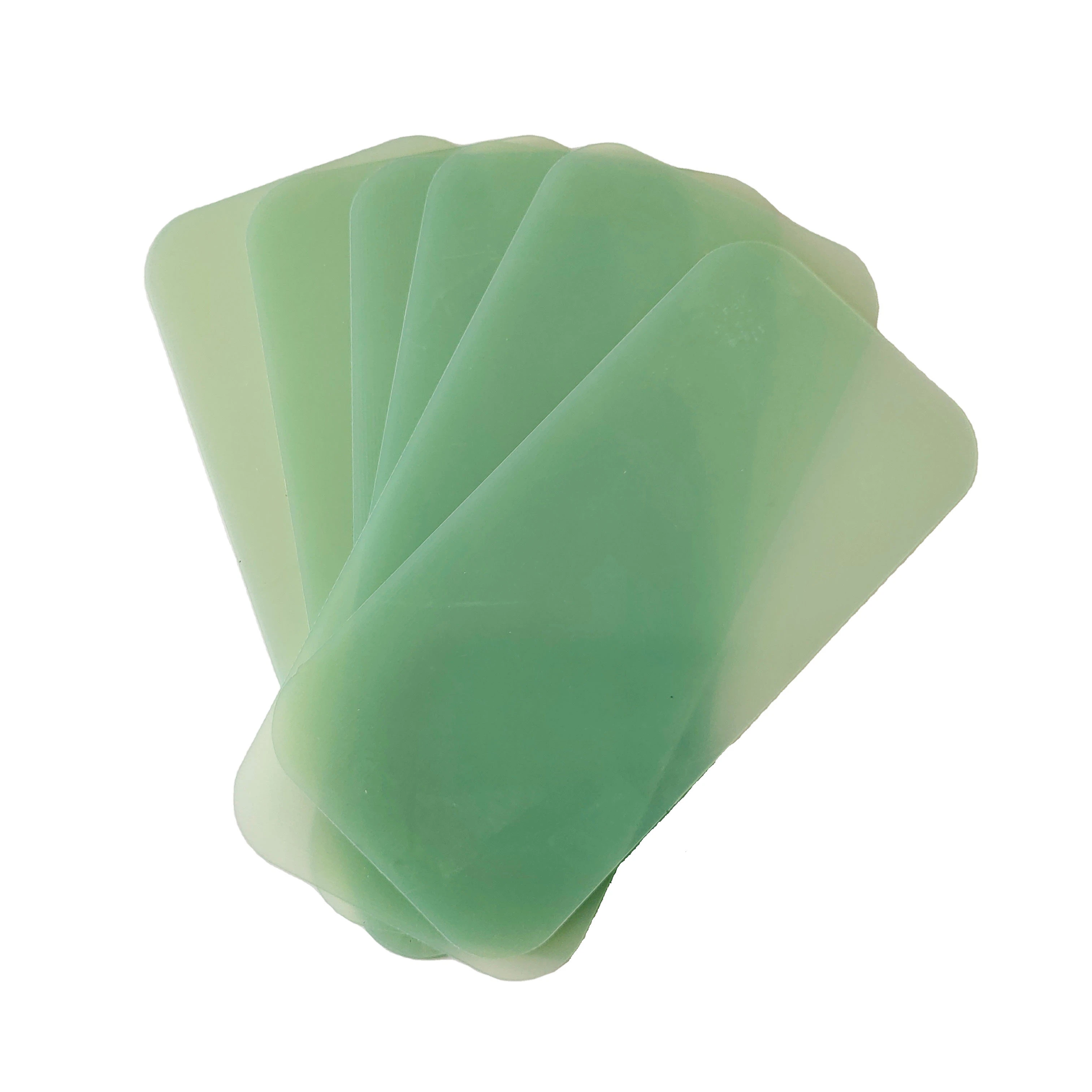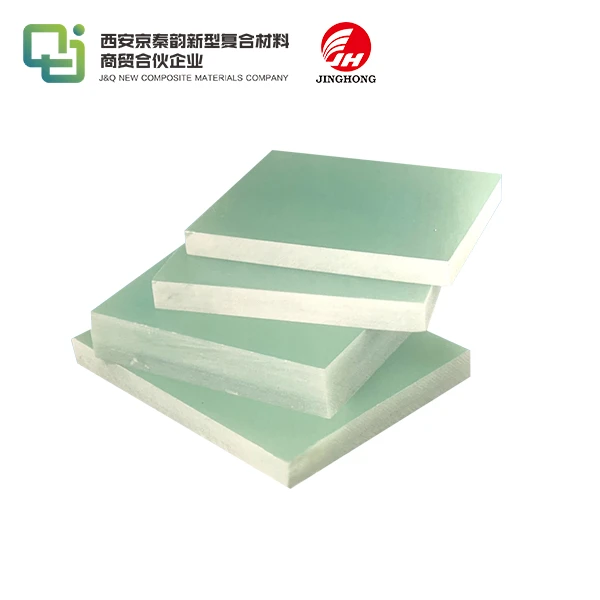The Performance and Application of Solid Insulating Materials
2021-10-26
There are lots of solid insulation materials such as FR4 sheet, 3240 Epoxy Resin Sheet, and 3026 Phenolic Cotton Cloth Laminate Sheet.
First The main properties of solid insulating materials
1. Insulation resistance
1) Leakage current
Although the resistivity of the insulating material is very high, there is always a small current flowing under the action of a certain voltage. This current is called leakage current. The leakage current consists of two parts, one part flows through the inside of the insulating material, and the other part along the insulation The surface of the material flows.
2) Surface resistivity and volume resistivity
For the same insulating material, the volume resistance value will decrease with the increase of temperature; the surface resistance value will decrease with the dirt on the surface; when the insulating material is damp, the volume resistance value and the surface resistance value will both decrease.
2. Breakdown strength
Insulating materials will be damaged and lose their insulation performance under the action of electric field strength higher than a certain value. This phenomenon is called breakdown. The electric field strength when the insulating material is broken down is called the breakdown strength, and the unit is kV/mm.
The breakdown of insulating materials can be divided into:
1) Electric breakdown
Under the action of a strong electric field, the charged particles inside the dielectric move violently, causing collision ionization, destroying the molecular structure, increasing the conductance, and finally breaking down.
2) Thermal breakdown
Under the action of a strong electric field, heat is generated inside the dielectric due to dielectric loss. If it cannot be dissipated in time, the internal temperature of the dielectric will rise, leading to breakdown of the molecular structure and breakdown.
3) Discharge breakdown
Under the action of a strong electric field, the bubbles contained in the dielectric first undergo collision ionization and discharge, and the impurities are also vaporized by the electric field heating, resulting in bubbles, so the bubble discharge further develops, leading to the breakdown of the entire insulating material.
3. Heat resistance
During the operation of electrical equipment, its insulating materials work under hot conditions for a long time, so the selected insulating materials must have a certain degree of heat resistance. Since the main factor that causes the aging of insulating materials is temperature, according to the heat resistance of various insulating materials, the maximum temperature during use is specified to ensure the service life of electrical products and avoid excessively high temperature during use and accelerate the insulation Material ageing.
Electrical insulation materials are divided into seven heat resistance grades according to their allowable maximum temperature:
1) Y grade
The limit temperature is 90°C. The main insulating materials include natural textiles such as wood, cotton, paper, and fibers, as well as textiles based on cellulose acetate and polyamide, and plastics that are easy to thermally decompose and have a low melting point.
2) Grade A
The limit temperature is 105°C. The main insulation materials are Y grade materials working in mineral oil, Y grade materials impregnated with oil or oleoresin compound glue, enameled wire, filter cloth, asphalt paint, etc.
3) Class E
The limit temperature is 120℃, and the main insulation materials are polyester film and A-grade material composite, glass cloth, oil-based resin paint, vinyl acetate heat-resistant enameled wire, etc.
4) Grade B
The limit temperature is 130℃. The main insulation materials are polyester film, mica, glass fiber, asbestos and other products that are impregnated and overcoated by suitable resin bonding, and polyester enameled wire.
5) F grade
The limit temperature is 155℃, and the main insulation materials are mica sheet products reinforced with organic fiber materials, glass fiber and asbestos, glass varnished cloth, etc.
6) Class H
The limit temperature is 180℃, and the main insulation materials are reinforced with or without mica products reinforced with inorganic materials, thickened F grade materials, silicone organic paint, silicone organic rubber, etc.
7) Grade C
The limit temperature is above 180℃, and the main insulating materials include inorganic minerals that do not use any organic binders and impregnants, such as quartz, asbestos, mica, glass and electric porcelain materials.
4. Mechanical strength
According to the specific requirements of various insulating materials, various strength indexes such as tensile, compressive, flexural, shear, tear, and impact resistance are stipulated accordingly. Various insulating materials should also have various performance indexes. Such as permeability, oil resistance, elongation, shrinkage, solvent resistance and arc resistance.
5. Aging of insulating materials
During the operation of the insulating materials in electrical equipment, a series of irreversible chemical and physical changes occur due to various reasons such as electricity and heat, resulting in the deterioration of electrical and mechanical properties, and this irreversible change becomes aging. The causes of aging are:
1) There is the escape of low-molecular volatile components in the dielectric.
2) Depolymerization and oxidative cracking, under the action of heat and oxygen, generate free radicals to initiate the reaction.
3) Thermal cracking, which produces harmful substances, hydrogen chloride has a catalytic effect on certain materials.
4) Hydrolysis. Under the action of heat, moisture reacts with insulating materials to cause hydrolysis.
5) The molecular chain continues to polymerize, causing the insulating material to become brittle.
Second, the application of solid insulating materials
1. Insulating paint
Insulating paint can be divided into dipping paint, covering paint and silicon steel sheet paint.
1) Dipping paint
Mainly used to impregnate motors, electrical coils and insulating parts to fill gaps and micropores and improve their electrical and mechanical properties. Commonly used are alkyd dipping paint and melamine alkyd dipping paint. Both of these are baking paints, both of which have good oil resistance and arc resistance, and the paint film is smooth and shiny.
2) Cover paint
There are two types of varnish and enamel, which are used to coat coils and insulating parts after immersion treatment, and form a continuous and uniform paint film on the surface as an insulating protective layer to prevent mechanical damage and atmospheric, lubricating oil and chemical The erosion of medicines.
2. Insulation paper
Insulating paper is an insulating material combined with paper and oil. The wrapped cable paper is dried and impregnated with cable oil under vacuum to form an oil-paper composite insulation structure. Cable paper is composed of wood fiber, which has high electrical properties, chemical stability and mechanical strength. The new type of polypropylene wood fiber paper has excellent characteristics of low dielectric loss.
3. Insulation layer of plastic insulated cable
The insulation layer of the plastic insulated cable is extruded insulation. Extrusion insulation is to squeeze plastic, rubber and other high molecular polymers on the conductor tightly with extrusion process equipment to form a uniform insulation layer structure. Commonly used extruded insulation materials include polyvinyl chloride, polyethylene, cross-linked polyethylene and ethylene-propylene rubber.
1) Polyvinyl chloride (PVC)
Polyvinyl chloride has good electrical properties and mechanical strength, has acid, alkali and oil resistance, non-flammable, and has good process performance. The disadvantage is that the heat resistance is low, the insulation resistance is small, and the dielectric loss is large.
2) Polyethylene (PE)
Polyethylene has excellent electrical properties and low dielectric loss. Adding a proper amount of additives can improve the corona resistance, heat resistance and mechanical strength of polyethylene, and improve the environmental stress cracking properties.
3) Cross-linked polyethylene
Cross-linked polyethylene has good heat resistance, but has poor corona and free discharge resistance. The cross-linked polyethylene cable has a higher allowable temperature rise and a larger allowable current-carrying capacity. It is suitable for various voltages, can be used for high-drop laying, and is easy to install and maintain.
4) Ethylene propylene rubber (XLPE)
Rubber insulation is flexible, easy to bend, and elastic, but it has poor corona resistance, ozone resistance, heat resistance and oil resistance. Rubber insulated cables can be used in severe cold climates, and are suitable for circuits that have been disassembled many times, but they can only be used as low-voltage cables and are not suitable for fixed-laying circuits.







